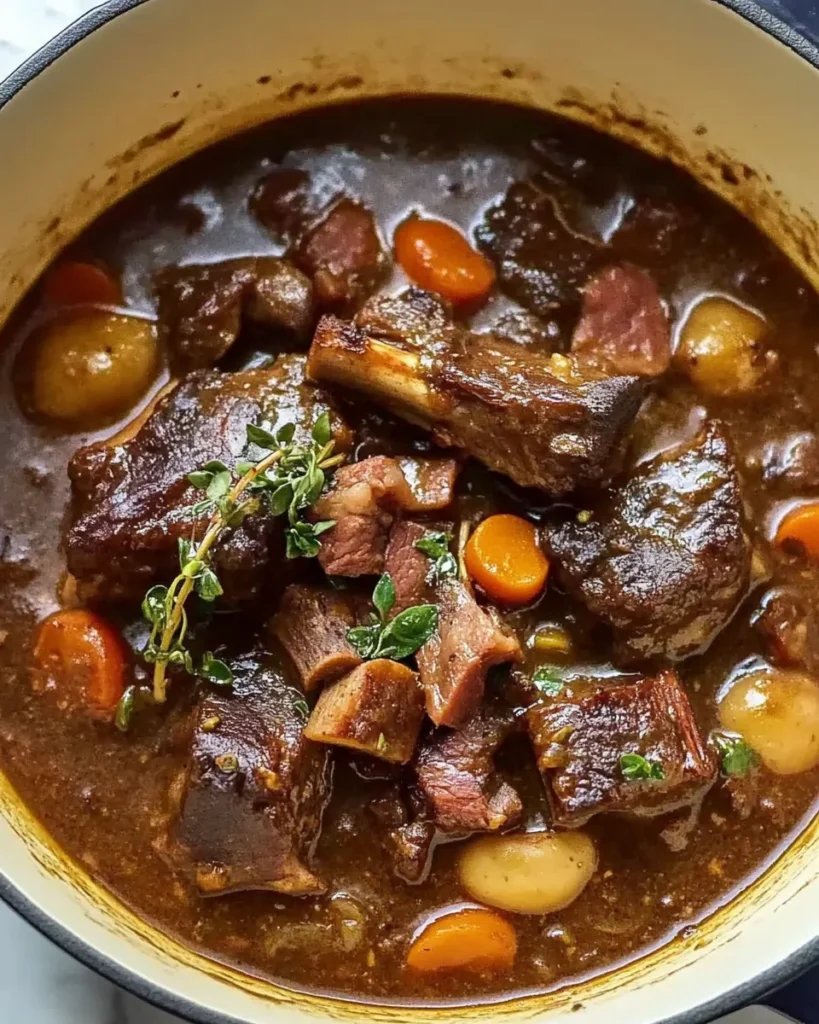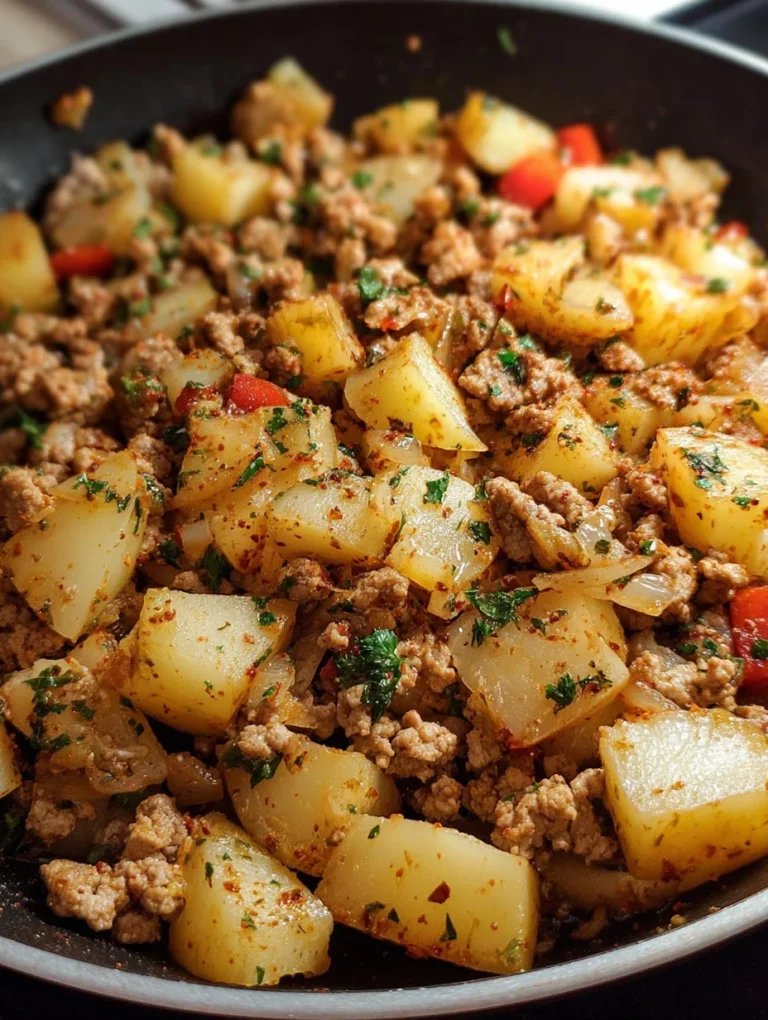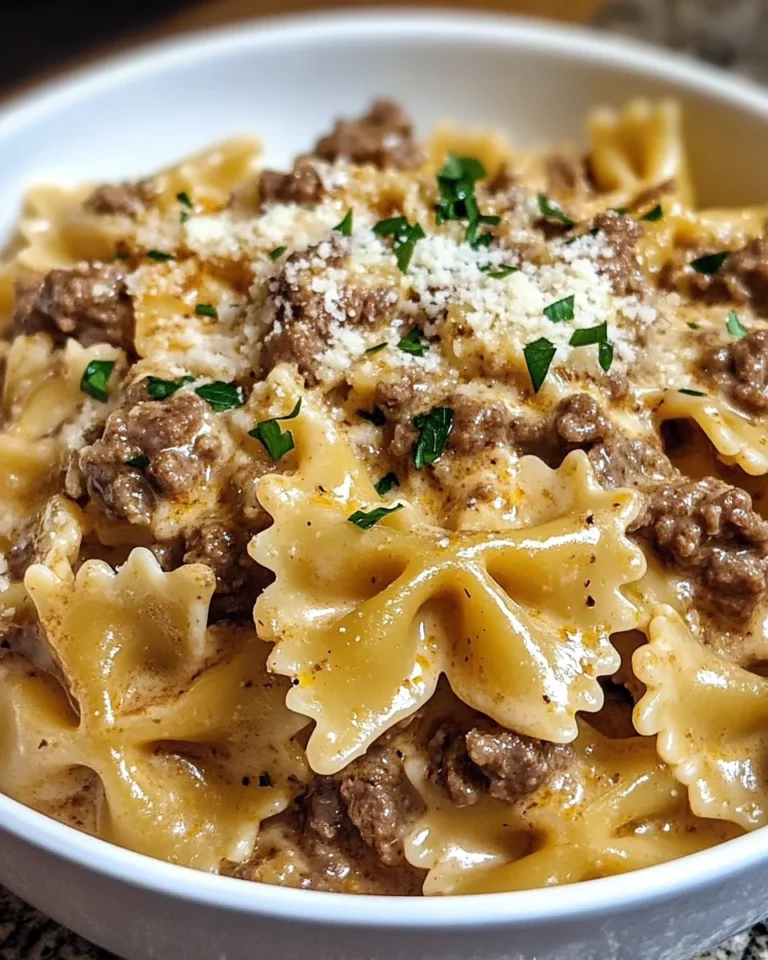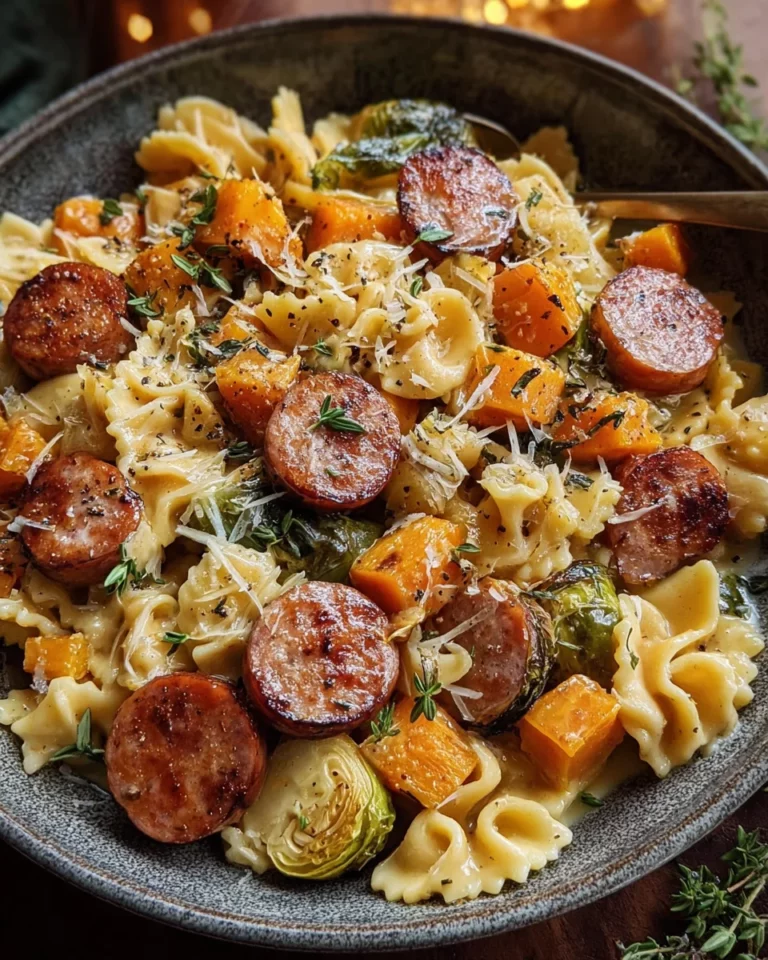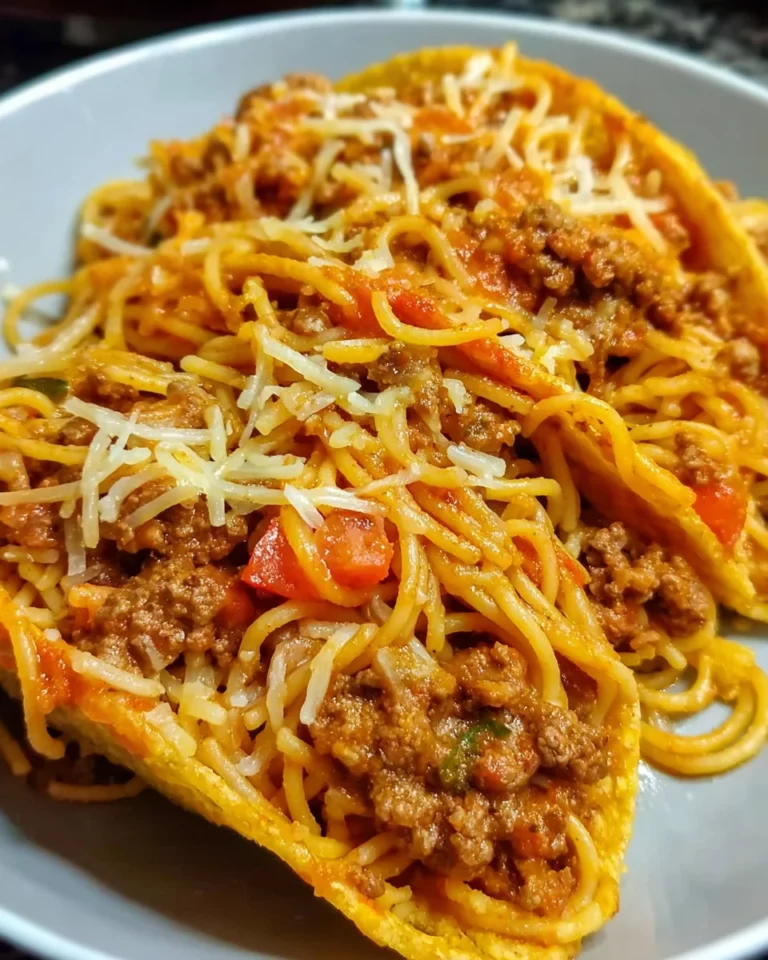Beef Carbonnade Recipe
Introduction to Beef Carbonnade Recipe
As a passionate home cook, I find joy in exploring the rich tapestry of flavors that different cuisines offer. One dish that has captured my heart is the delightful Beef Carbonnade. This traditional Belgian stew is a warm embrace on a chilly evening, with its tender beef and aromatic vegetables simmered to perfection. The first time I made it, I was transported to a cozy bistro in Brussels, where the air was filled with the scent of hearty meals and laughter.
What I love most about Beef Carbonnade is its simplicity. It’s a dish that invites you to slow down and savor the moment. The combination of beef, beer, and fresh herbs creates a symphony of flavors that dance on your palate. I remember the first time I served it to my family; their eyes lit up with delight as they took their first bites. It was a moment of pure happiness, and I knew I had stumbled upon something special.
This recipe is not just about cooking; it’s about creating memories. Whether you’re gathering around the dinner table with loved ones or enjoying a quiet night in, Beef Carbonnade brings warmth and comfort to any occasion. So, roll up your sleeves, and let’s embark on this culinary adventure together. I promise you, the end result will be worth every minute spent in the kitchen!
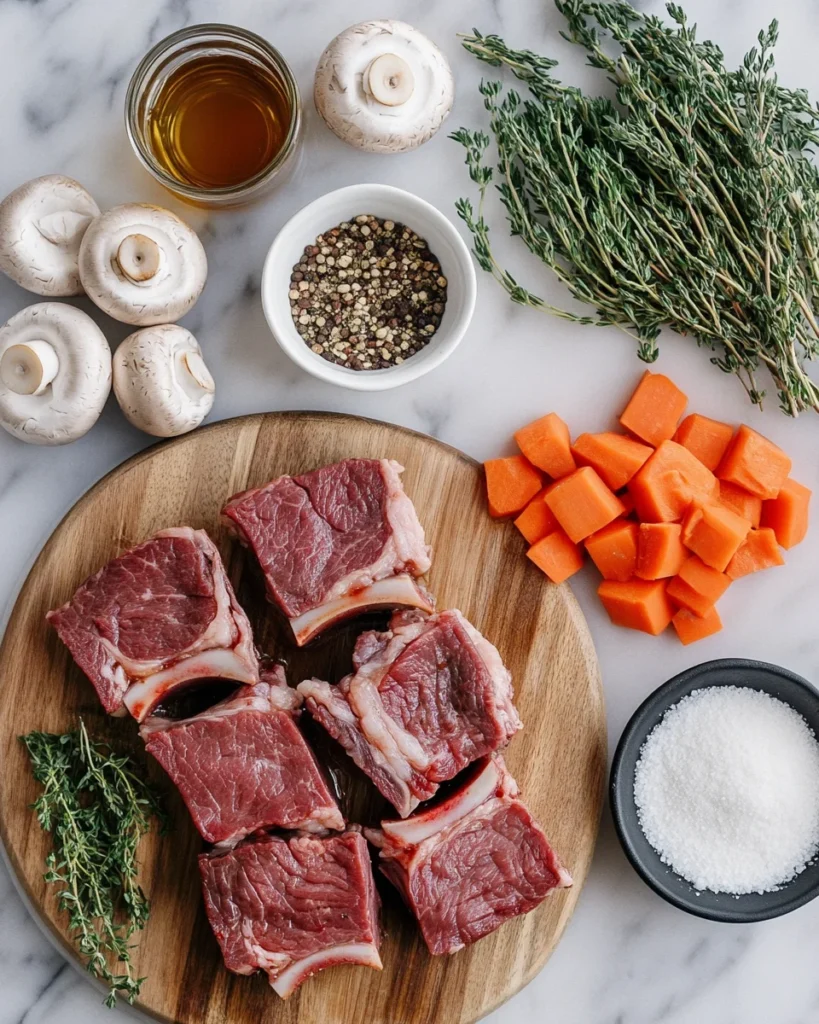
Ingredients for Beef Carbonnade Recipe
Before we dive into the cooking process, let’s gather our ingredients. Having everything prepped and ready makes the cooking experience smoother and more enjoyable. Here’s what you’ll need for this delightful Beef Carbonnade recipe.
Main Ingredients
- 1.5 kg beef short ribs – trimmed (about 3.3 lbs). I recommend choosing well-marbled beef for a richer flavor and tenderness.)
- 2 tablespoons olive oil – this will help in browning the beef and adding depth to the dish.
- ¼ cup plain/all-purpose flour – for dusting the beef, which helps create a lovely crust when browning.
- 1 large carrot – diced, adding a touch of sweetness to balance the savory flavors.
- 2 brown onions – sliced, they bring a wonderful aroma and sweetness as they cook down.
- 300 g button mushrooms – if small, leave them whole; otherwise, slice them thickly for a hearty bite.
- 150 g speck – diced, this smoky addition elevates the dish with its rich flavor.
- 2 tablespoons tomato paste – for a hint of acidity and color.
- 2 fresh garlic cloves – crushed, because garlic makes everything better!
- 2 tablespoons wholegrain mustard – it adds a delightful tang and texture.
- 1 tablespoon fresh thyme leaves (or 1 teaspoon dried) – for that earthy aroma.
- 1 tablespoon fresh rosemary – finely chopped, it brings a fragrant note to the dish.
- 350 ml beer – I prefer a good Belgian ale, as it complements the stew beautifully.
- 500 ml beef stock – homemade is best, but store-bought works too. Just ensure it’s low-sodium for better control over seasoning.
- Salt & pepper – to taste, enhancing all the flavors.
Optional Add-ons
- 1 tablespoon brown sugar – if you like a touch of sweetness, this can balance the flavors nicely.
- 1 bay leaf – for an extra layer of flavor during simmering.
- Chopped fresh parsley – for garnish, adding a pop of color and freshness when serving.
When selecting your ingredients, I always recommend going for the freshest options available. Local farmers’ markets often have the best produce, and a good butcher can help you find the perfect cut of beef. Trust me, the quality of your ingredients will shine through in the final dish!
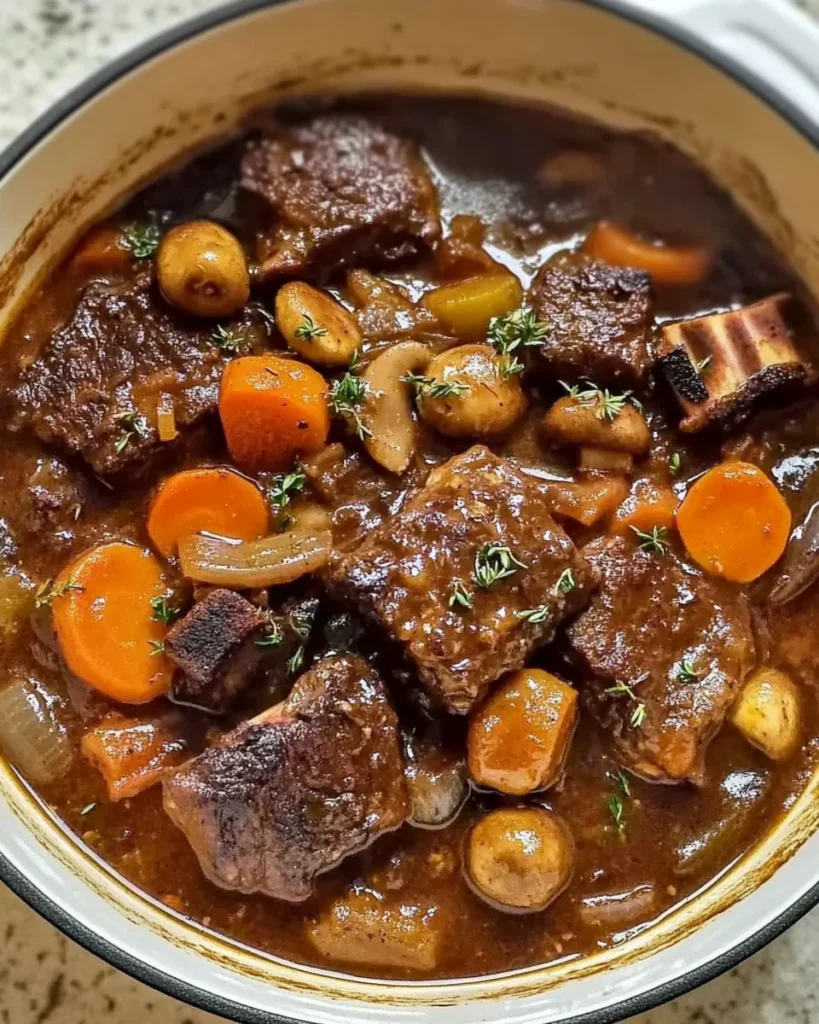
How to Prepare Beef Carbonnade Recipe
Now that we have our ingredients ready, it’s time to roll up our sleeves and dive into the cooking process. Making Beef Carbonnade is like embarking on a flavorful journey, and I can’t wait to share each step with you. Let’s get started!
Step 1: Browning the Beef
The first step is to brown the beef short ribs. This is crucial because it locks in the flavors and gives the dish a beautiful color. Start by cutting the beef into individual ribs and dusting them with flour. This little step helps create a lovely crust when we sear them.
Heat 1 tablespoon of olive oil in a large flameproof casserole dish or Dutch oven over medium-high heat. Once the oil is hot, add the beef ribs in batches. Make sure not to overcrowd the pot; otherwise, they won’t brown properly. Fry them until they are golden brown on all sides, then remove them to a plate.
Tips for Achieving a Perfect Brown
- Pat the beef dry with paper towels before dusting with flour. This helps achieve a nice sear.
- Don’t rush this step! Take your time to get that beautiful brown color.
- If the pot gets too hot, lower the heat to avoid burning the oil.
Step 2: Sautéing the Vegetables
With the beef set aside, it’s time to sauté the vegetables. In the same pot, add the diced carrot, sliced brown onions, button mushrooms, and diced speck. Cook them until the vegetables start to soften and the onions become translucent. This step is where the magic begins, as the flavors meld together beautifully.
Tips for Flavor Enhancement
- Stir occasionally to prevent sticking and ensure even cooking.
- Feel free to add a pinch of salt at this stage to help draw out the moisture from the vegetables.
- If you want an extra layer of flavor, consider adding a splash of the beer to deglaze the pot while sautéing.
Step 3: Deglazing the Pan
Once the vegetables are softened, it’s time to deglaze the pan. Add the tomato paste and crushed garlic cloves to the vegetable mixture. Stir and cook for about 30 seconds, allowing the flavors to bloom. Then, pour in the beer and bring it to a simmer. This step is essential as it lifts all those delicious browned bits from the bottom of the pot, infusing the dish with rich flavor.
Importance of Deglazing
- Deglazing not only enhances the flavor but also prevents burning.
- Use a wooden spoon to scrape the bottom of the pot, ensuring you get every bit of flavor.
- Choose a beer that you enjoy drinking; the better the beer, the better the stew!
Step 4: Simmering the Dish
Now that we have all our ingredients in the pot, it’s time to bring it all together. Add the wholegrain mustard, fresh thyme, and rosemary, stirring to combine. Then, pour in the beef stock and return the browned beef ribs to the pot, along with any resting juices. Bring everything to a gentle simmer.
Cover the pot and bake it in the preheated oven for about 2 hours, or until the beef is tender and falls off the bone. This slow cooking process allows all the flavors to meld beautifully.
Timing for Optimal Flavor
- Check the beef after 1.5 hours; if it’s tender, it’s ready!
- For an even richer flavor, consider letting it simmer longer if time allows.
- Don’t forget to taste and adjust the seasoning with salt and pepper before serving!
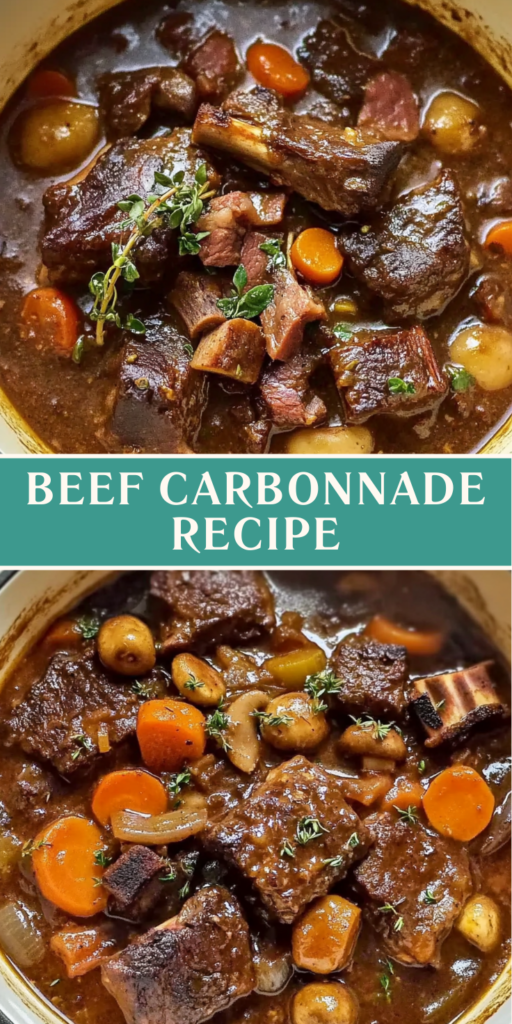
Equipment Needed for Beef Carbonnade Recipe
Before we embark on our culinary adventure, let’s make sure we have the right tools at our disposal. Having the right equipment can make the cooking process smoother and more enjoyable. Here’s what you’ll need for this Beef Carbonnade recipe:
- Large Flameproof Casserole Dish or Dutch Oven – This is essential for browning the beef and simmering the stew. If you don’t have one, a heavy-bottomed pot can work as an alternative.
- Wooden Spoon – Perfect for stirring and deglazing the pan. It’s gentle on your cookware and helps scrape up all those delicious bits.
- Measuring Cups and Spoons – Accurate measurements are key to achieving the best flavor. A set of measuring cups and spoons will ensure you get it just right.
- Sharp Knife and Cutting Board – For chopping vegetables and trimming the beef. A good knife makes all the difference in the kitchen!
- Oven Mitts – Safety first! These will protect your hands when handling the hot pot.
With these tools in hand, you’re all set to create a delicious Beef Carbonnade that will warm your heart and delight your taste buds. Let’s get cooking!
Variations of Beef Carbonnade Recipe
While the classic Beef Carbonnade recipe is a treasure on its own, I love to experiment with variations that add a personal twist. Cooking is all about creativity, and sometimes, a little change can lead to delightful surprises. Here are a few variations I’ve tried and enjoyed:
- Vegetable Carbonnade: For a vegetarian twist, I swap the beef for hearty vegetables like eggplant, zucchini, and bell peppers. The beer and stock still work their magic, creating a rich, flavorful stew.
- Spicy Carbonnade: If you enjoy a kick, add some diced jalapeños or a pinch of cayenne pepper. The heat complements the sweetness of the beer and the richness of the beef beautifully.
- Herb-Infused Carbonnade: Experiment with different herbs like sage or tarragon. Each herb brings its unique flavor profile, making the dish feel fresh and exciting.
- Beer Variety: While I love using a Belgian ale, feel free to try different types of beer. A stout or porter can add a deeper, more robust flavor, while a lager might lighten the dish.
These variations not only keep the dish interesting but also allow you to tailor it to your taste preferences. I encourage you to get creative and make this recipe your own. After all, the kitchen is a playground for flavors!
Cooking Notes for Beef Carbonnade Recipe
As I’ve journeyed through the delightful process of making Beef Carbonnade, I’ve gathered a few cooking notes that can help elevate your experience. These tips are like little nuggets of wisdom that I wish I had when I first started cooking this dish.
- Marinate for Extra Flavor: If you have time, consider marinating the beef in beer, garlic, and herbs for a few hours or overnight. This step infuses the meat with even more flavor and tenderness.
- Adjusting Consistency: If you prefer a thicker sauce, you can remove the lid during the last 30 minutes of cooking to allow some liquid to evaporate. Alternatively, mix a tablespoon of cornstarch with cold water and stir it in during the last few minutes of cooking.
- Make Ahead: Beef Carbonnade tastes even better the next day! If you can, prepare it a day in advance and let the flavors meld overnight in the fridge. Just reheat gently before serving.
- Serving Temperature: This dish is best served warm, so make sure to let it cool slightly before serving. It allows the flavors to settle and makes for a more enjoyable dining experience.
These cooking notes are meant to inspire you and help you navigate the kitchen with confidence. Remember, cooking is as much about the journey as it is about the destination. Enjoy every moment, and let your creativity shine!
Serving Suggestions for Beef Carbonnade Recipe
Now that our Beef Carbonnade is bubbling away, it’s time to think about how to serve this delightful dish. Presentation can elevate the dining experience, and I love to make my meals feel special. Here are some serving suggestions that I’ve found work wonderfully with this hearty stew:
- Crusty Bread: A loaf of fresh, crusty bread is a must! It’s perfect for soaking up the rich sauce. I often serve a warm baguette or rustic sourdough on the side.
- Mashed Potatoes: Creamy mashed potatoes make a fantastic base for the Beef Carbonnade. The smooth texture complements the tender beef beautifully.
- Steamed Vegetables: A side of lightly steamed green beans or broccoli adds a pop of color and freshness to the plate. It balances the richness of the stew.
- Garnish with Fresh Herbs: Just before serving, I like to sprinkle some chopped fresh parsley or thyme on top. It adds a lovely touch of color and a burst of freshness.
- Pair with Beer: Since beer is a key ingredient, why not enjoy a glass of the same beer you used in the recipe? It enhances the flavors and makes for a delightful pairing.
These serving suggestions not only enhance the meal but also create a warm and inviting atmosphere at the dinner table. I always find that sharing a delicious dish like Beef Carbonnade brings everyone together, sparking laughter and conversation. So, gather your loved ones, serve up this comforting stew, and enjoy every bite!
Tips for Perfecting Beef Carbonnade Recipe
As I’ve cooked Beef Carbonnade time and time again, I’ve picked up a few tips that can truly elevate your dish. These little secrets can make a big difference, ensuring that your stew is not just good, but absolutely unforgettable. Here’s what I’ve learned:
- Choose Quality Meat: The better the beef, the better the stew! Look for well-marbled short ribs, as the fat adds flavor and tenderness.
- Don’t Skip the Browning: Browning the beef is essential. It creates a depth of flavor that you simply can’t achieve by skipping this step. Take your time and enjoy the process!
- Use Fresh Herbs: Fresh herbs can make a world of difference. They add brightness and complexity to the dish. If you can, opt for fresh thyme and rosemary over dried.
- Let It Rest: After cooking, let the stew sit for a few minutes before serving. This allows the flavors to settle and meld together, making each bite even more delicious.
- Adjust Seasoning: Always taste before serving! A little extra salt or pepper can enhance the flavors and bring the dish to life.
These tips are like little gems I’ve gathered along my cooking journey. They help me create a Beef Carbonnade that not only warms the heart but also delights the taste buds. I hope they inspire you to make this dish your own and enjoy every moment in the kitchen!
Breakdown of Time for Beef Carbonnade Recipe
When it comes to cooking, timing is everything! Knowing how long each step takes can help you plan your meal better. Here’s a quick breakdown of the time involved in making this delicious Beef Carbonnade:
- Prep Time: Approximately 30 minutes. This includes gathering your ingredients, chopping vegetables, and dusting the beef with flour.
- Cooking Time: About 2 hours. This is the time spent simmering the beef and allowing all those wonderful flavors to meld together in the oven.
- Total Time: Roughly 2 hours and 30 minutes. This includes both prep and cooking time, giving you a complete picture of your culinary adventure.
With this time breakdown, you can easily fit Beef Carbonnade into your schedule. Whether it’s a cozy family dinner or a gathering with friends, knowing the timing helps you serve up a delightful meal without any stress. Happy cooking!
Nutritional Information for Beef Carbonnade Recipe
As a home cook, I always find it helpful to know the nutritional value of the dishes I prepare. It allows me to enjoy my meals while being mindful of what I’m eating. Here’s a general breakdown of the nutritional information for a serving of Beef Carbonnade, based on the ingredients listed in this recipe:
- Calories: Approximately 450-500 calories per serving.
- Protein: Around 40 grams, thanks to the beef and speck.
- Fat: About 25 grams, primarily from the beef and olive oil.
- Carbohydrates: Roughly 20 grams, mainly from the vegetables and flour.
- Fiber: Approximately 3 grams, contributed by the carrots and mushrooms.
- Sodium: Varies based on the beef stock used, but generally around 600-800 mg.
Keep in mind that these values can vary based on specific ingredient choices and portion sizes. If you’re looking to make this dish a bit lighter, consider using leaner cuts of beef or reducing the amount of speck. Regardless, Beef Carbonnade is a hearty and satisfying meal that’s perfect for sharing with loved ones!
Frequently Asked Questions about Beef Carbonnade Recipe
As I’ve shared my love for Beef Carbonnade, I often get questions from fellow home cooks eager to try this delightful dish. Here are some of the most frequently asked questions, along with my answers to help you navigate your culinary journey with confidence.
Can I use a different cut of beef for this recipe?
Absolutely! While I love using beef short ribs for their tenderness and flavor, you can also use chuck roast or brisket. Just remember that cooking times may vary depending on the cut you choose. The key is to ensure the meat is well-marbled for the best results.
What type of beer should I use?
I recommend using a Belgian ale for its rich flavor, but feel free to experiment! A stout or porter can add depth, while a lager will lighten the dish. Just choose a beer you enjoy drinking, as it will enhance the overall flavor of the stew.
Can I make Beef Carbonnade in a slow cooker?
Yes, you can! After browning the beef and sautéing the vegetables, transfer everything to a slow cooker. Cook on low for 6-8 hours or on high for 3-4 hours. This method allows the flavors to meld beautifully while you go about your day!
How do I store leftovers?
Leftovers can be stored in an airtight container in the refrigerator for up to 3 days. The flavors will continue to develop, making it even tastier the next day! You can also freeze it for up to 3 months. Just thaw and reheat gently before serving.
Can I make this dish ahead of time?
Definitely! In fact, Beef Carbonnade tastes even better the next day. You can prepare it a day in advance and let it sit in the fridge overnight. Just reheat it gently on the stove or in the oven before serving. It’s a great option for meal prep or entertaining!
These FAQs are designed to help you feel more confident as you embark on your Beef Carbonnade adventure. Cooking is all about exploration and learning, so don’t hesitate to ask questions and make this recipe your own. Enjoy the process, and happy cooking!
Conclusion on Beef Carbonnade Recipe
As I reflect on my culinary journey with Beef Carbonnade, I can’t help but feel a sense of warmth and satisfaction. This dish is more than just a recipe; it’s a celebration of flavors, a gathering of loved ones, and a comforting hug on a chilly evening. The tender beef, rich beer, and aromatic herbs come together to create a stew that is both hearty and heartwarming.
What I love most about Beef Carbonnade is its versatility. Whether you’re cooking for a special occasion or simply enjoying a cozy night in, this dish adapts beautifully to any setting. Plus, the leftovers are a delightful treat, often tasting even better the next day!
So, if you’re looking to impress your family or simply indulge in a comforting meal, I encourage you to give this Beef Carbonnade recipe a try. Roll up your sleeves, savor the process, and enjoy the delicious results. Trust me, every bite will be a reminder of the joy that cooking can bring!
PrintBeef Carbonnade Recipe
- Total Time: 2 hours and 30 minutes
- Yield: 4–6 servings 1x
- Diet: Gluten Free
Description
Beef Carbonnade is a traditional Belgian stew made with tender beef, beer, and aromatic vegetables, perfect for a cozy evening.
Ingredients
- 1.5 kg beef short ribs – trimmed (about 3.3 lbs)
- 2 tablespoons olive oil
- ¼ cup plain/all-purpose flour
- 1 large carrot – diced
- 2 brown onions – sliced
- 300 g button mushrooms
- 150 g speck – diced
- 2 tablespoons tomato paste
- 2 fresh garlic cloves – crushed
- 2 tablespoons wholegrain mustard
- 1 tablespoon fresh thyme leaves (or 1 teaspoon dried)
- 1 tablespoon fresh rosemary – finely chopped
- 350 ml beer – preferably a good Belgian ale
- 500 ml beef stock – low-sodium
- Salt & pepper – to taste
Instructions
- Brown the beef short ribs in olive oil, dusted with flour, until golden brown on all sides.
- Sauté the diced carrot, sliced onions, button mushrooms, and diced speck until softened.
- Deglaze the pan with tomato paste and crushed garlic, then add beer and bring to a simmer.
- Add wholegrain mustard, thyme, rosemary, and beef stock, then return the browned beef to the pot.
- Cover and bake in the oven for about 2 hours, or until the beef is tender.
Notes
- Marinate the beef for extra flavor if time allows.
- Adjust the consistency by removing the lid during the last 30 minutes of cooking.
- Beef Carbonnade tastes better the next day, so consider making it ahead of time.
- Serve warm for the best flavor experience.
- Prep Time: 30 minutes
- Cook Time: 2 hours
- Category: Main Course
- Method: Baking
- Cuisine: Belgian
Nutrition
- Serving Size: 1 serving
- Calories: 450-500
- Sugar: 3g
- Sodium: 600-800mg
- Fat: 25g
- Saturated Fat: 10g
- Unsaturated Fat: 15g
- Trans Fat: 0g
- Carbohydrates: 20g
- Fiber: 3g
- Protein: 40g
- Cholesterol: 100mg

